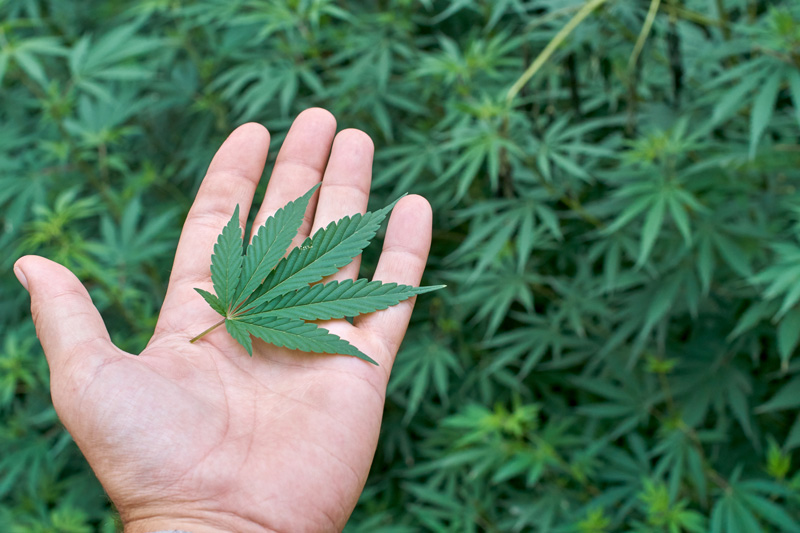The percentage of adolescents reporting substance use in 2022 largely held steady after significantly declining in 2021, according to the latest results from the Monitoring the Future survey of substance use behaviors and related attitudes among eighth, 10th, and 12th graders in the United States. Reported use for almost all substances decreased dramatically from 2020 to 2021 after the onset of the COVID-19 pandemic and related changes like school closures and social distancing. In 2022, reported use of any illicit drug within th e past year remained at or significantly below pre-pandemic levels for all grades, with 11% of eighth graders, 21.5% of 10th graders, and 32.6% of 12th graders reporting any illicit drug use in the past year.

The Monitoring the Future survey is conducted each year by researchers at the University of Michigan, Ann Arbor, and funded by the National Institute on Drug Abuse (NIDA), part of the National Institutes of Health.
“The Monitoring the Future Survey is one of the best and most timely tools we have to monitor and understand changes in substance use among young people over time, including through historic events such as the COVID-19 pandemic,” said Nora Volkow, M.D., NIDA director. “It is encouraging that we did not observe a significant increase in substance use in 2022, even as young people largely returned to in-person school, extracurricular activities, and other social engagements.”

Nora D. Volkow, MD
Director, National Institute
on Drug Abuse (NIDA)
The Monitoring the Future survey is given annually to students in eighth, 10th, and 12th grades who self-report their substance use behaviors over various time periods, such as past 30 days, past 12 months, and lifetime. The survey also documents students’ perception of harm, disapproval of use, and perceived availability of drugs. Notably, the survey results are released the same year the data are collected.
From February through June 2022, the Monitoring the Future investigators collected 31,438 surveys from students enrolled across 308 public and private schools in the United States. The completed survey from 2022 is nationally representative and represents about 75% of the sample size of a typical year’s data collection. The Monitoring the Future investigators noted that schools opt-in to participate in the survey, and some schools that normally participate opted-out this year as they continued to operationally recover from the pandemic. All participating students took the survey via the web – either on tablets or on a computer – with between 95-99% of respondents taking the survey in-person in school.
The survey found that adolescents most commonly reported use of alcohol, nicotine vaping, and cannabis in the past year, and levels generally held steady with those reported in 2021. For substances where reported past-year use did increase between 2021 and 2022, the vast majority of reported use remained at or below the pre-pandemic levels observed in 2020. Compared to levels observed in 2021, data reported in 2022 show:
- Nicotine vaping remained stable for all three grades surveyed, with 12% of eighth graders, 20.5% of 10th graders, and 27.3% of 12th graders reporting vaping nicotine in the past year.
- Cannabis use also remained stable for all three grades surveyed, with 8.3% of eighth graders, 19.5% of 10th graders, and 30.7% of 12th graders reporting cannabis use in the past year. Of note, 6.0% of eighth graders, 15.0% of 10th graders, and 20.6% of 12th graders reported vaping cannabis within the past year, reflecting a stable trend at the pre-pandemic level among eighth and 12th graders, and a small increase in reported use among 10th graders, though reported use among 10th graders in 2022 is still significantly below pre-pandemic levels.
- Alcohol use remained stable for eighth and 10th graders (with 15.2% and 31.3% reporting use in the past year, respectively) but returned to pre-pandemic levels for 12th graders in 2022 (with 51.9% of 12th graders reporting alcohol use in the past year).
- Any illicit drug use other than marijuana also remained stable for all three grades surveyed, with 4.9% of eighth graders, 5.7% of 10th graders, and 8.0% of 12th graders reporting any illicit drug use other than marijuana in the past year. These data build on long-term trends documenting low and fairly steady use of illicit substances reported among teenagers – including past-year use of cocaine, heroin, amphetamines, and nonmedical use of prescription drugs, generally.
- Use of narcotics other than heroin (including Vicodin, OxyContin, Percocet, etc.) increased slightly among 12thgraders between 2021 and 2022 (with 1.7% of 12th graders reporting use within the past year), consistent with the pre-pandemic levels observed in 2019 and 2020 (2.7% and 2.1%, respectively).
When asked a range of questions about the perceived harmfulness of occasionally taking specific prescription medications (such as OxyContin and Vicodin), or the risk of “narcotics other than heroin” overall, the percentage of students who reported perceiving a “great risk” ranged from 22.9% among eighth graders to 52.9% among 12th graders. The percentage of respondents who reported perceiving a “great risk” associated with taking Adderall occasionally ranged from 28.1% among eighth graders to 39.6% among 12th graders.
Though the data have indicated stable or declining use of illicit drugs among young people over many years, other research has reported a recent dramatic rise in overdose deaths among young people ages 14-18. This increase is largely attributed to illicit fentanyl, a potent synthetic drug, contaminating the supply of counterfeit pills made to resemble prescription medications like benzodiazepines, ADHD medications, and opioids.
“The proliferation of fentanyl in the drug supply is of enormous concern. Though the data indicate that drug use is not becoming more common among young people than it has been in the past, the tragic increase in overdose deaths among this population suggest that drug use is becoming more dangerous than ever before,” said Dr. Volkow. “It is absolutely crucial to educate young people that pills purchased via social media, given to someone by a friend, or obtained from an unknown source may contain deadly fentanyl.”
The results were gathered from a nationally representative sample, and the data were statistically weighted to provide national numbers. This year, 11% of the 12th grade students who took the survey identified as African American, 22% as Hispanic, 5% as Asian, 1% as American Indian or Alaska Native, 47% as white, 1% as Middle Eastern, and 14% as more than one of the preceding categories. The survey also asks respondents to identify as male, female, other, or prefer not to answer. For the 2022 survey, 48% of 12th grade students identified as male, 47% identified as female, 1% identified as other, and 4% selected the “prefer not to answer” option.
“We were curious to see whether the significant decreases in substance use we observed last year would continue into the future, and we now see that there may indeed be a longer lasting impact for some substances,” said Richard A. Miech, Ph.D., team lead of the Monitoring the Future study at the University of Michigan. “The fact that cannabis use and nicotine vaping did not appear to return to pre-pandemic levels in 2022 is a fascinating data point. Moving forward, it will be important to continue to monitor these trends to understand the impact on future drug use behavior and outcomes.”
The 2022 Monitoring the Future data tables highlighting the survey results are available online from the University of Michigan.
This article was originally published here on December 14th.
For more information on substance and mental health treatment programs in your area, call the free and confidential National Helpline 1-800-662-HELP (4357) or visit www.FindTreatment.gov.
About the National Institute on Drug Abuse (NIDA): NIDA is a component of the National Institutes of Health, U.S. Department of Health and Human Services. NIDA supports most of the world’s research on the health aspects of drug use and addiction. The Institute carries out a large variety of programs to inform policy, improve practice, and advance addiction science. For more information about NIDA and its programs, visit https://www.nida.nih.gov/.
About the National Institutes of Health (NIH): NIH, the nation’s medical research agency, includes 27 Institutes and Centers and is a component of the U.S. Department of Health and Human Services. NIH is the primary federal agency conducting and supporting basic, clinical, and translational medical research, and is investigating the causes, treatments, and cures for both common and rare diseases. For more information about NIH and its programs, visit www.nih.gov.





